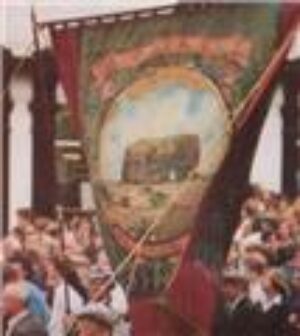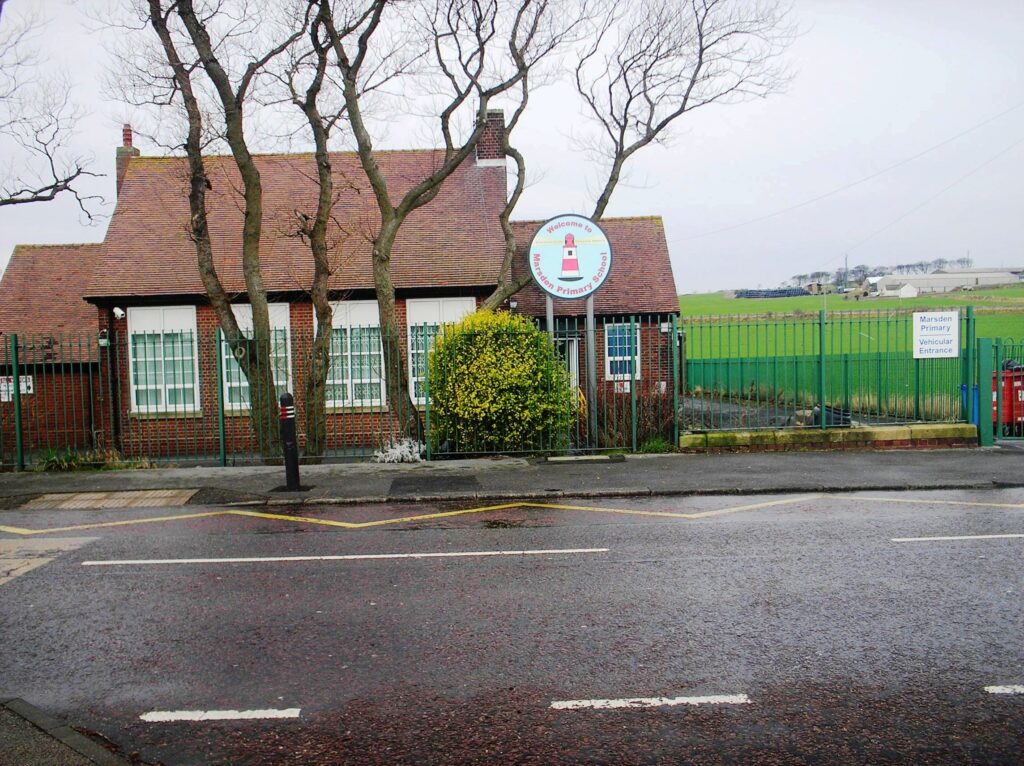
Marsden Primary School stands on the A183 Coast road. The school was built in the 1930’s to replace the old colliery school at Marsden Village. Standing at the school gates looking north up the Coast road, a stranger to the area would be unaware of the areas industrial past.
From the school gates north to the Lime Kilns a distance of 1 mile this short stretch of coastline once gave employment to thousands of people. Today almost nothing remains to show the passing of time and the hive of activity that was once present here.
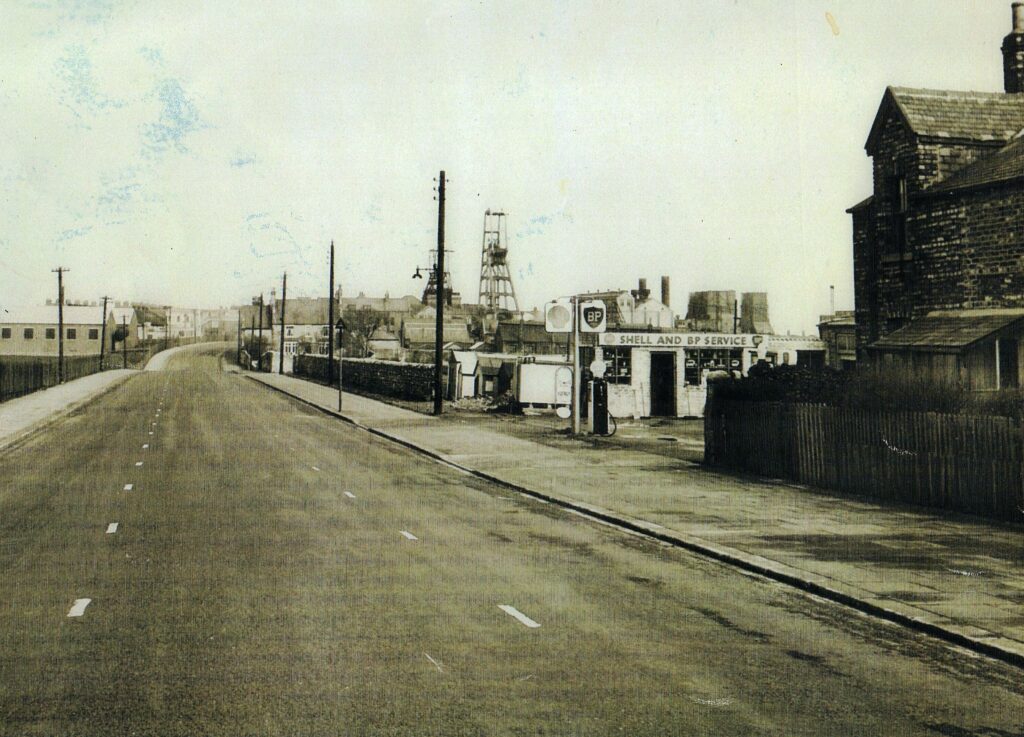
The Coast Road garage was built by Derek Wilson in 1954. When Mr Wilson returned home from the war he started a taxi business on wasteland where the garage now stands. He had 5 vehicles and after making a success of the business he built his own garage to service the cars. This too became a successful enterprise and he extended the garage in 1956.
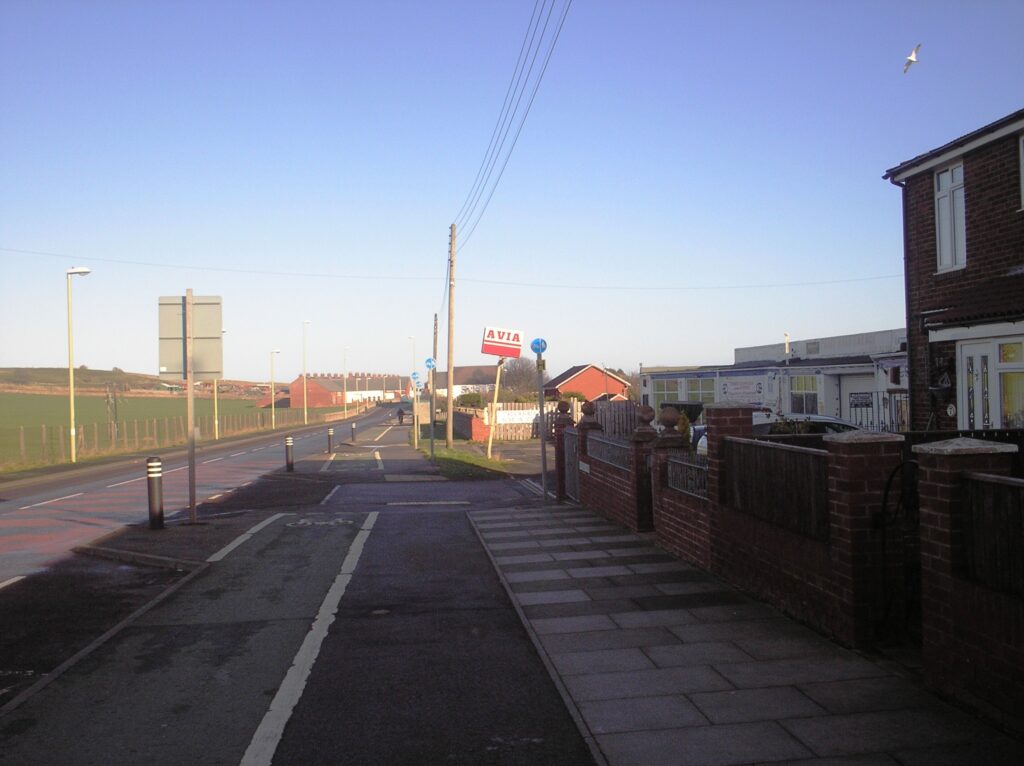
Walking north past the Coast road garage and then looking east you see the new housing estate of Shearwater.
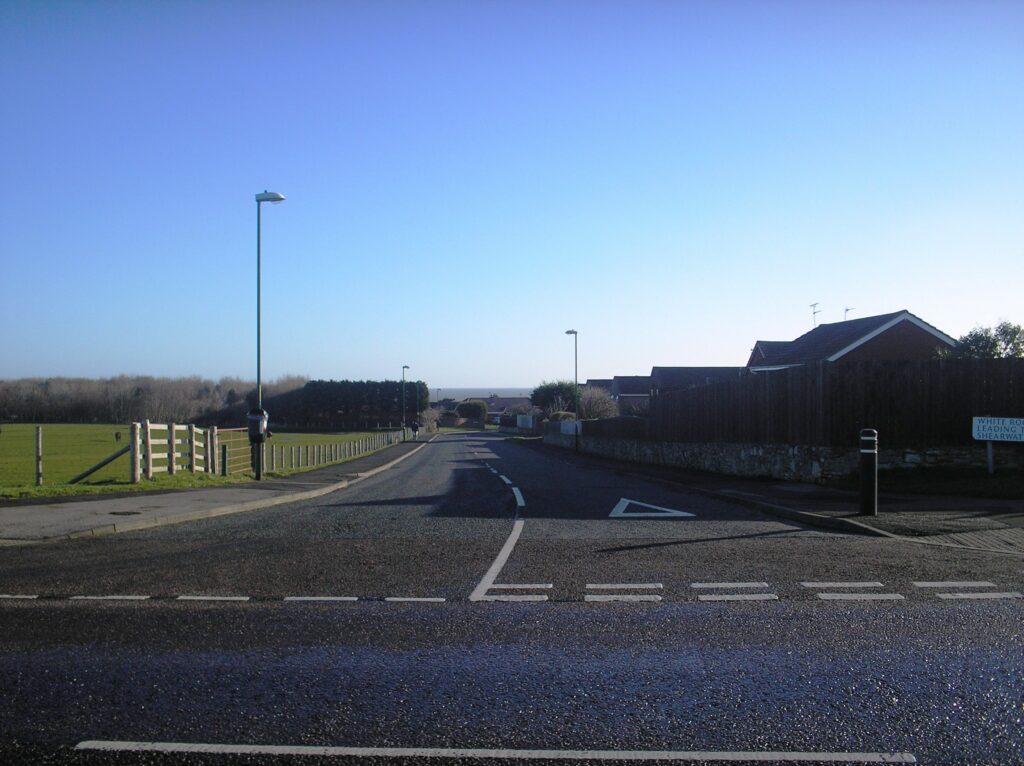
This estate is built on reclaimed industrial land. In 1887 North Eastern paper mills started to build a mill here to produce newsprint.
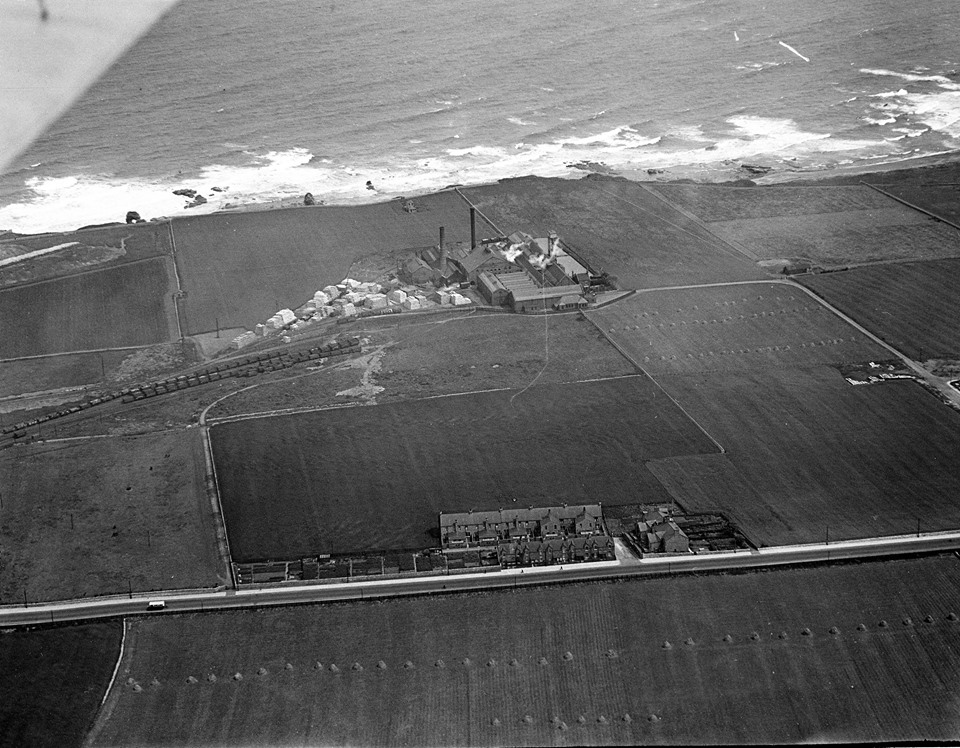
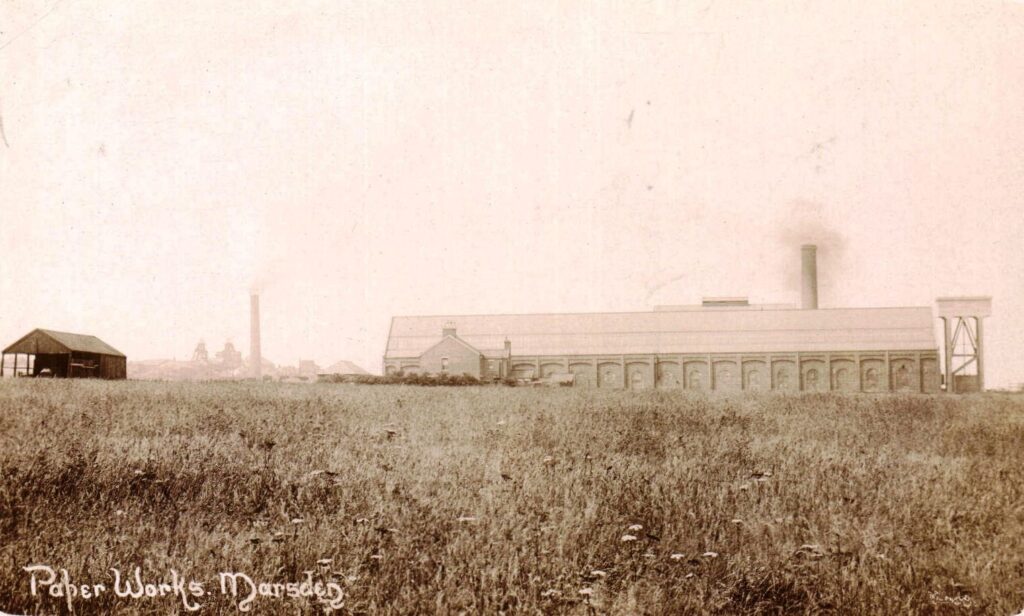
Some contributing factors lead North Eastern paper mills to site its mill at Whitburn. It was away from the expanding urban areas of South Shields and land was still relatively cheap to buy.
Built next to the newly sunk Whitburn colliery they had access to an abundance of cheap fuel. They also had good transport links as the colliery railway was extended to run straight into the mill yard. Raw materials and the finished product had easy access to and from the docks at South Shields.
A damp atmosphere is required in the production of newsprint to reduce the risk of fire from dust explosions and to stop the newsprint from splitting on the rollers. They kept the mill damp by hosing the floors down with water, built on the coast the natural damp atmosphere would also have helped in this process.
About 150 people were employed on the mill site.
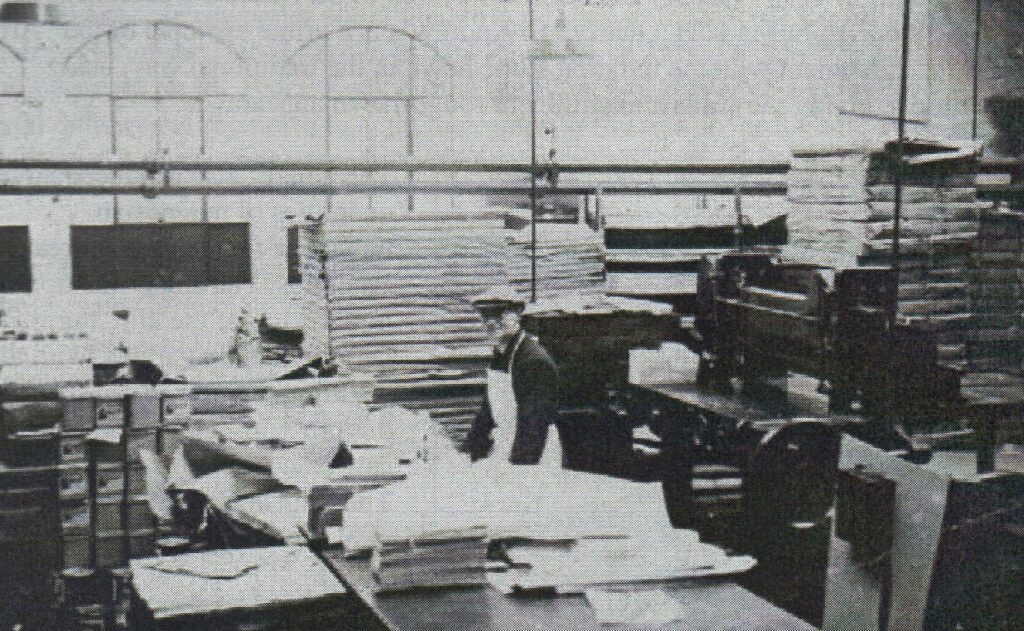
North Eastern paper mills were a company independent of the Harton coal company but very much dependent on the others good will.
From production in 1898 the mill produce newsprint for local newspapers. After 12 successful years major investment took place in 1910 with new machinery being installed. One of the machines installed was the largest in Britain at that time. The mill was then producing over 300 tons of newsprint a week, supplying newspapers all over the country.
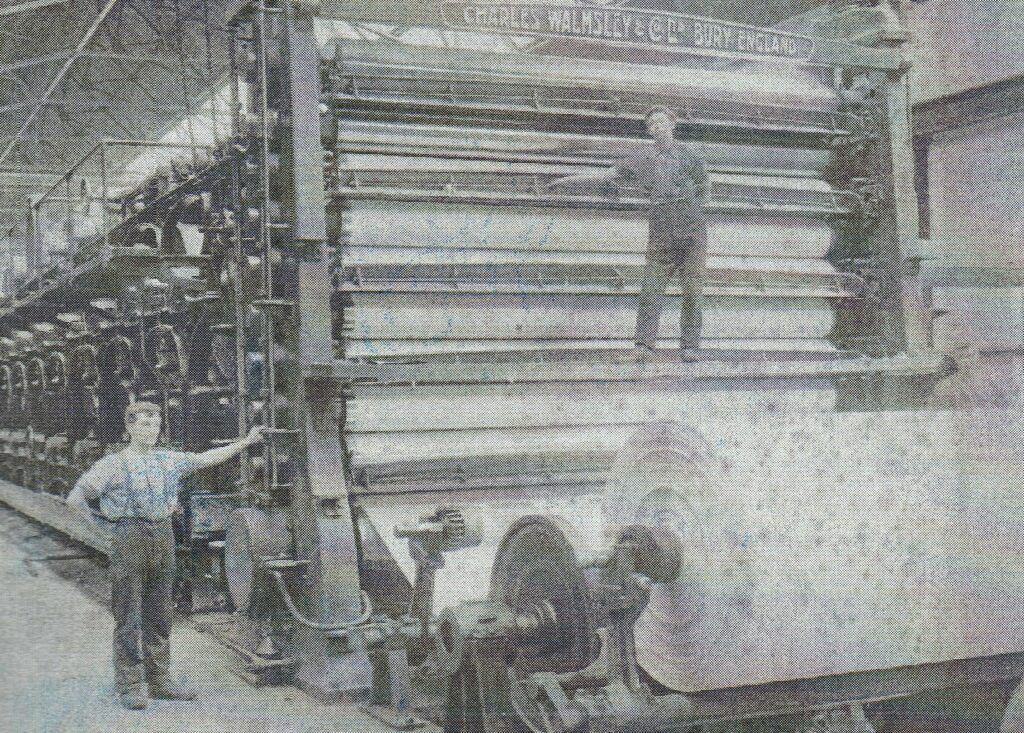
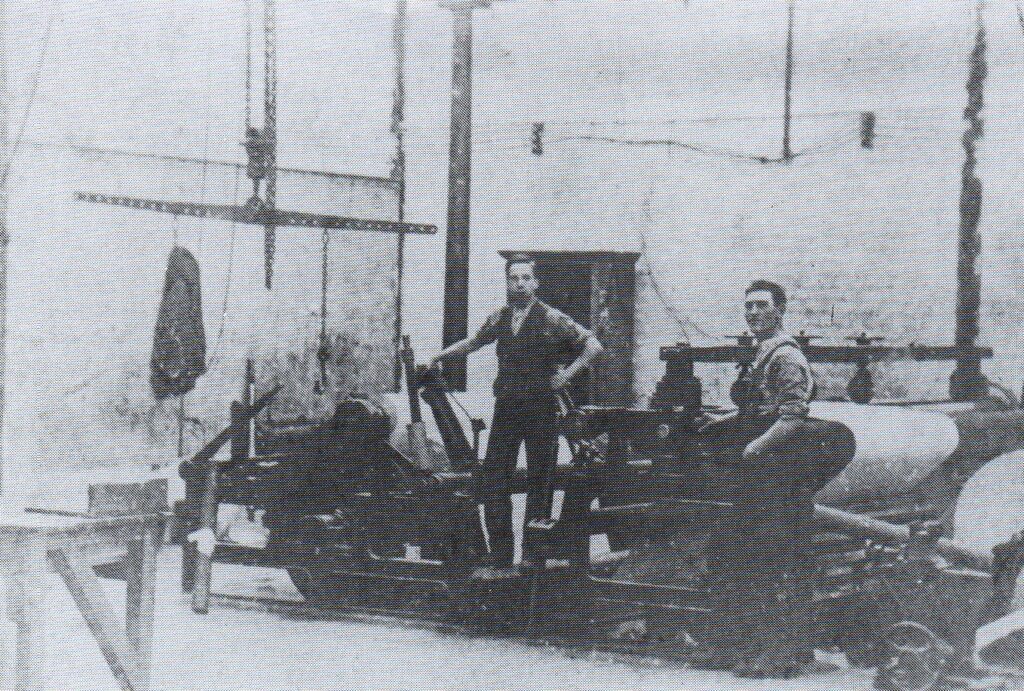
In 1912 a major fire broke out, burning for days, it destroyed the mill. Although the company rebuilt the mill by then previous markets had been lost. The company diversified from its previous business plan and produced other paper products. However the mill never reproduced the profits of those earlier years and in May 1934 the mill closed.
Once the mill closed and the previous tenants moved out the Harton coal company took over the buildings. They used them as the area blacksmiths shops for all the groups pits Westoe & St Hilda, Boldon, Harton and Whitburn.
Vesting Day, January 1, 1947 and the formation of the National Coal Board saw the buildings still being used as workshops and in the 1950’s new ones erected next to them to form the Whitburn area workshops.
Also in the 1950’s the coal board built a new office block at the site. Opened in 1959 these would become NCB No 1 area headquarters offices. They were known locally as the Crystal Place because of the amount of lights that were always left on. Both the workshops and the offices closed and were demolished in the 1980’s now the Shearwater estate.
A few hundred staff worked across both sites.
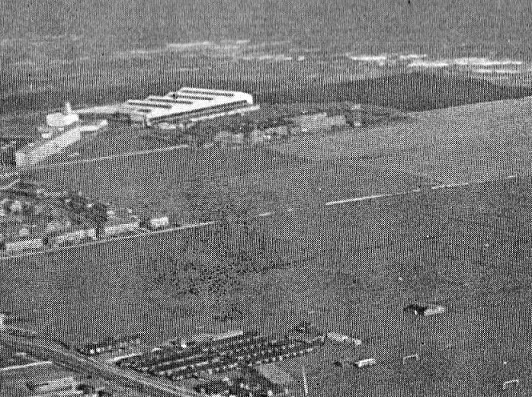
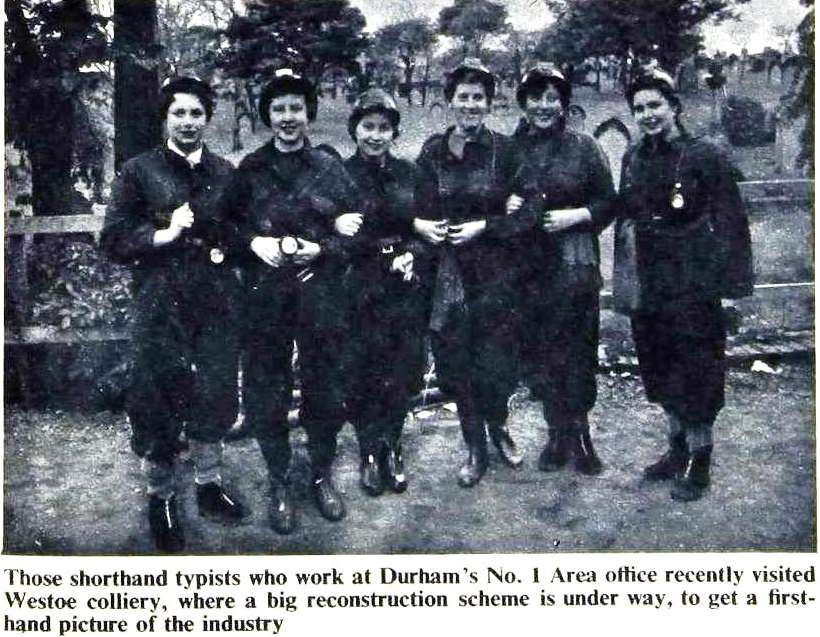
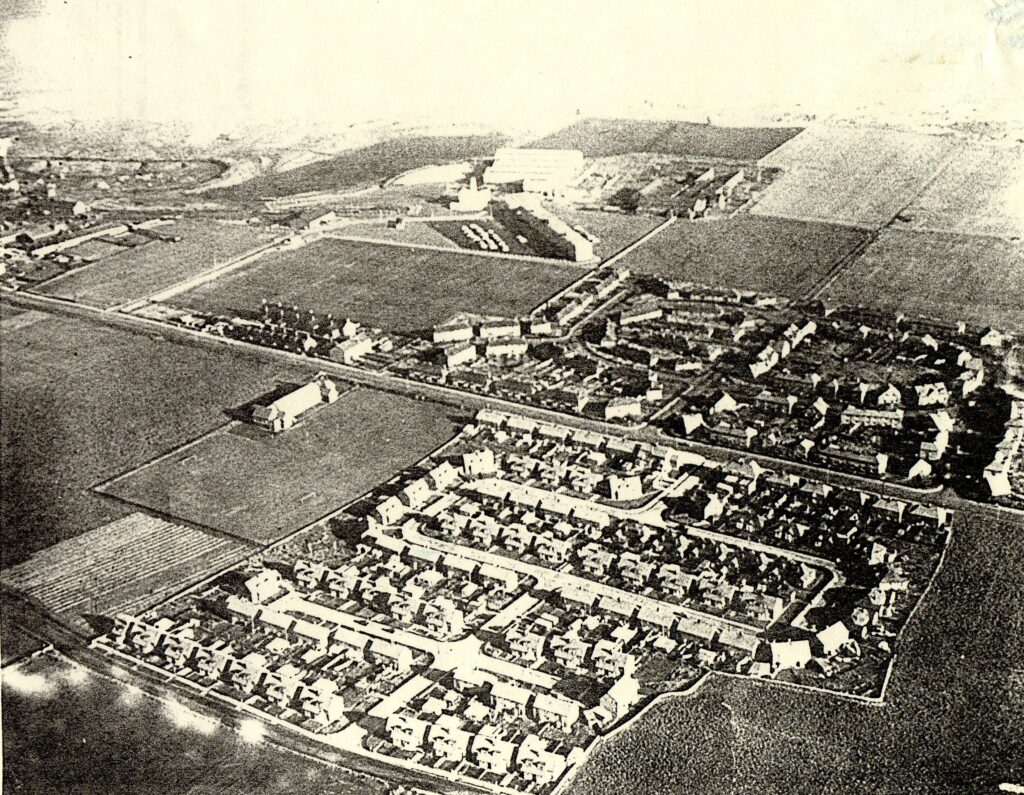
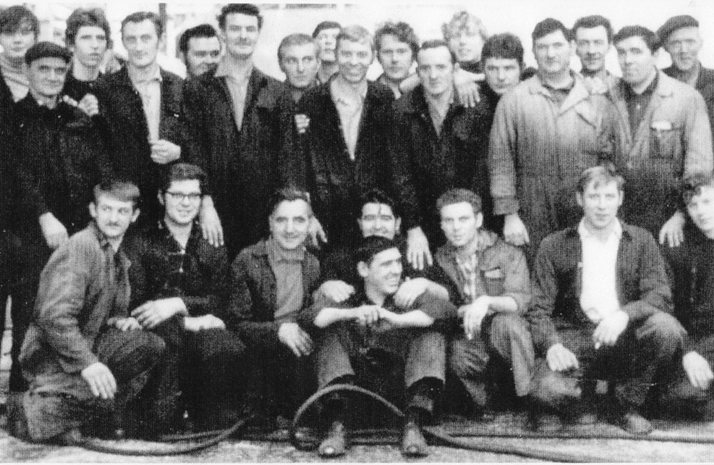
Carrying on north up the coast road, you come to the now derelict Whitburn Lodge pub. The pub was made up of Hope house the colliery managers house and the under managers cottages.
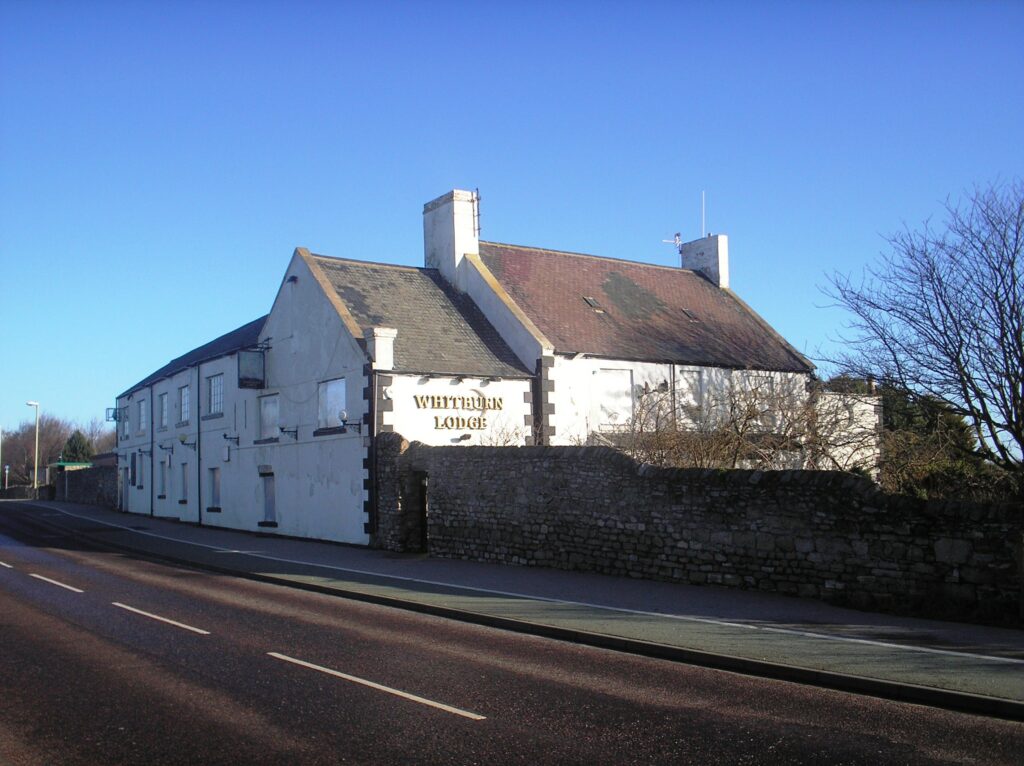
Passing the pub you come to the old pit gates the only remainder of the colliery left standing. The height of employment was in 1921 when the colliery was employing 3,497 men and boys. When the pit was abandoned in 1968 it had a workforce of 1,017.
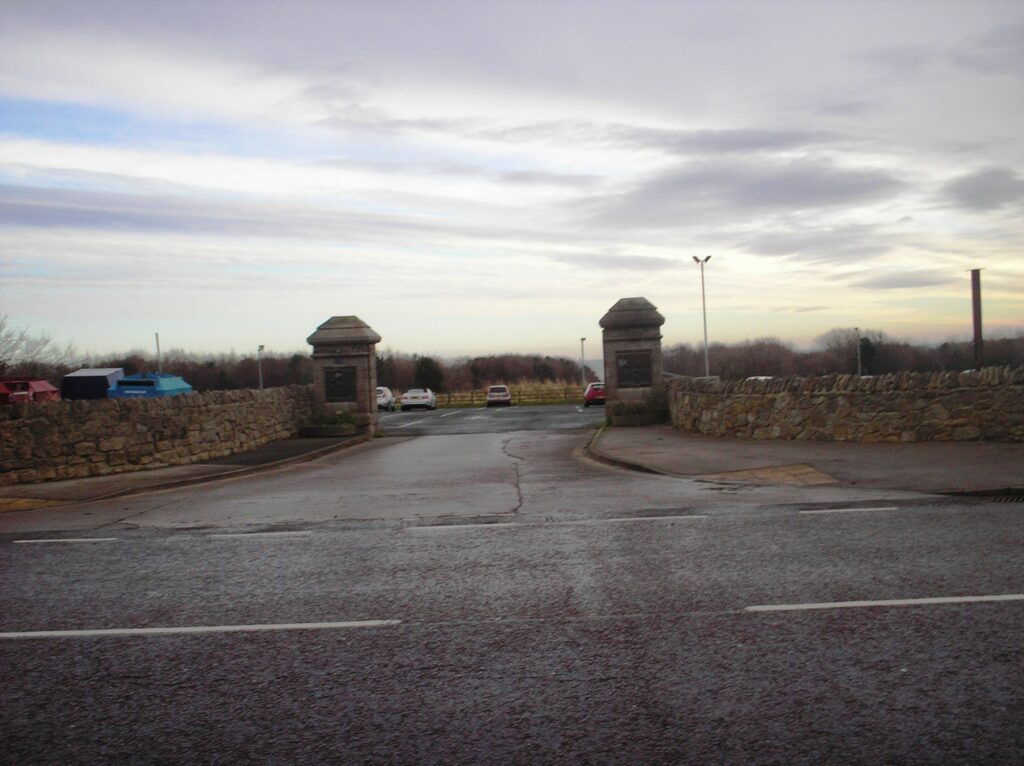
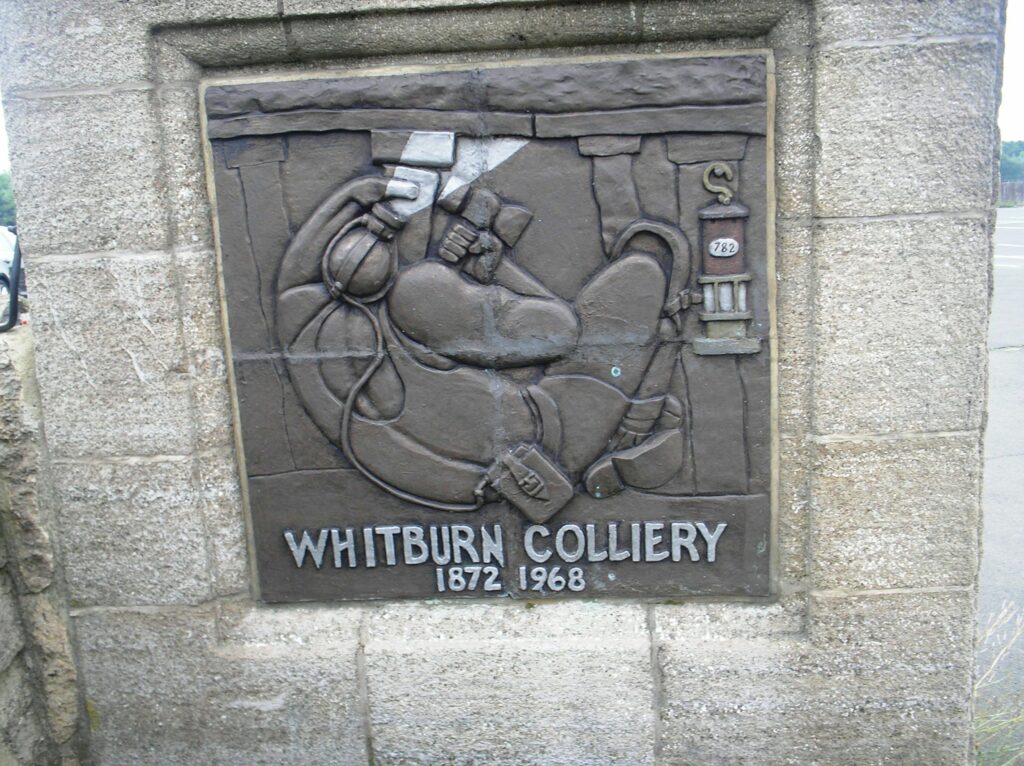
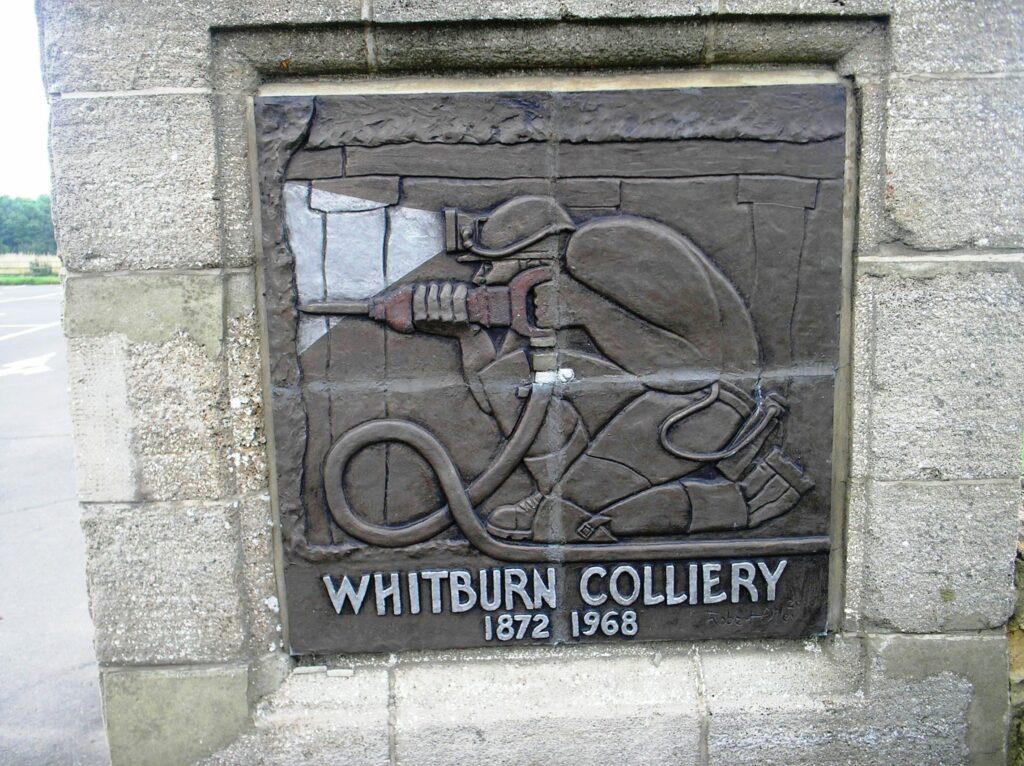
On the opposite side of the road is Shorts of Whitburn (lawn mowers) occupying the site of what was the old Economic bus depot and the pit canteen.
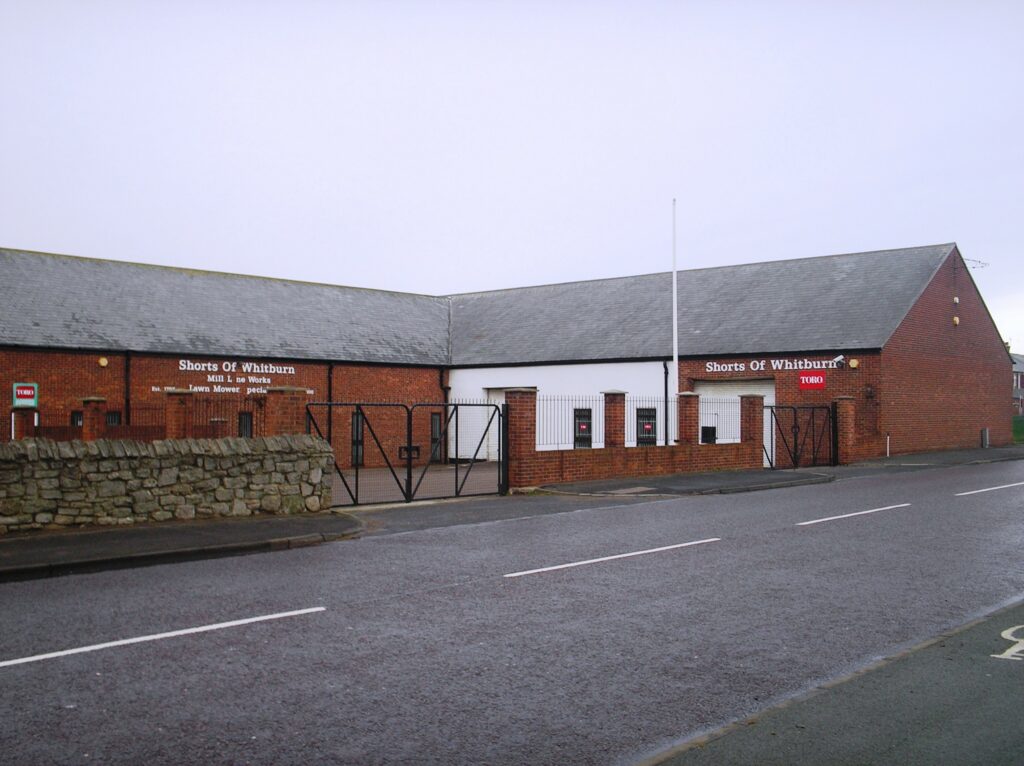
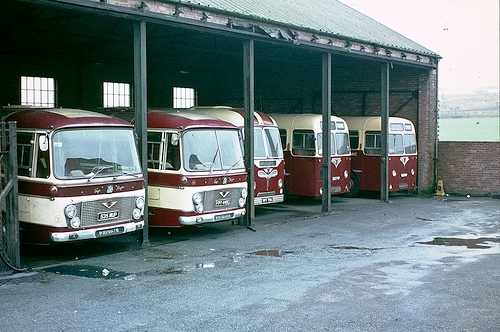
The Economic Bus Services employed about 60 staff, drivers, conductresses and mechanics. Staff were employed across 2 sites this one and one at the Bents. The company was sold to the Tyne and Wear Passenger Transport Executive on the 1st January 1975.
Next to Shorts a children’s playground occupies the site of the old pithead baths.
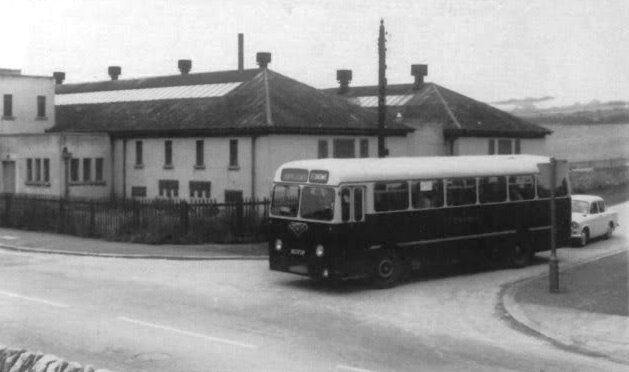
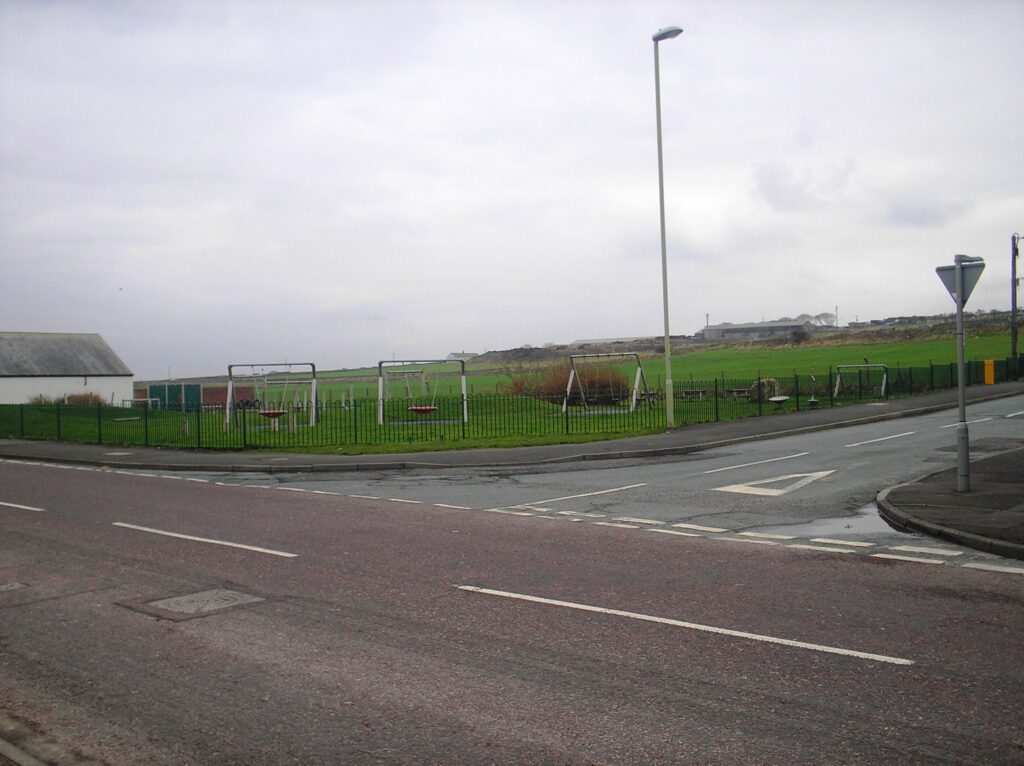
Further up the road on left hand side you have the 3 terraces of Mill lane and Arthur street which when first built were colliery officials houses.
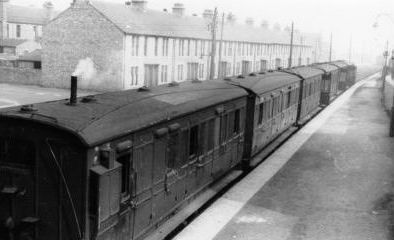
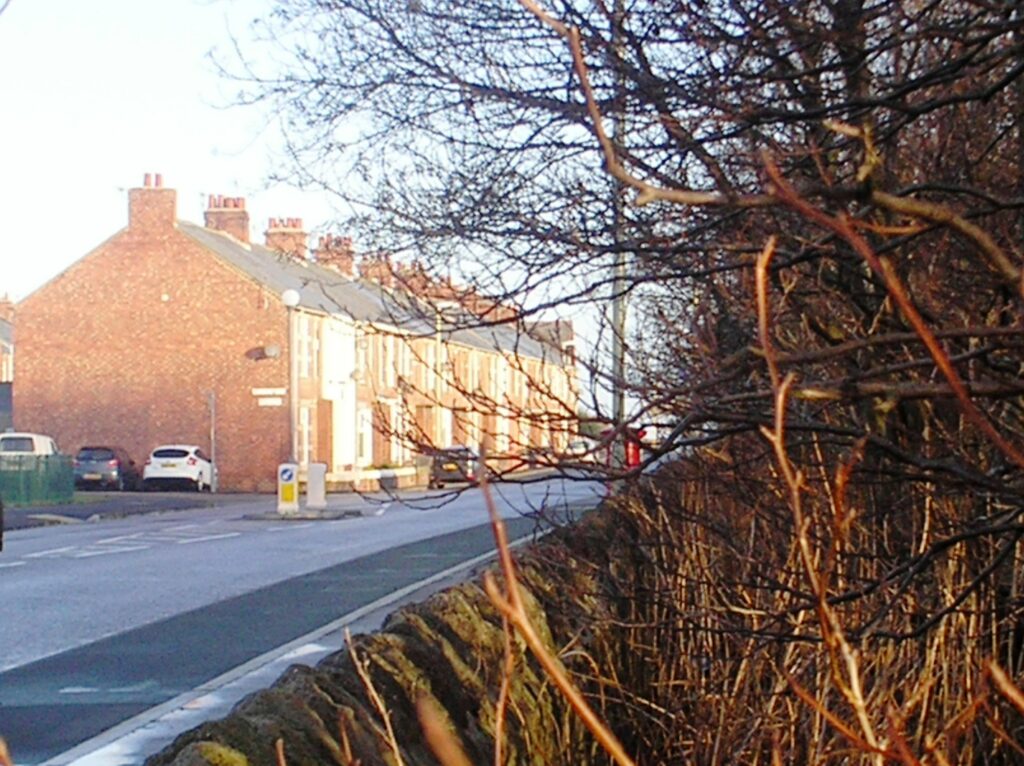
Continuing on you come to the entrance of Marsden Quarry.
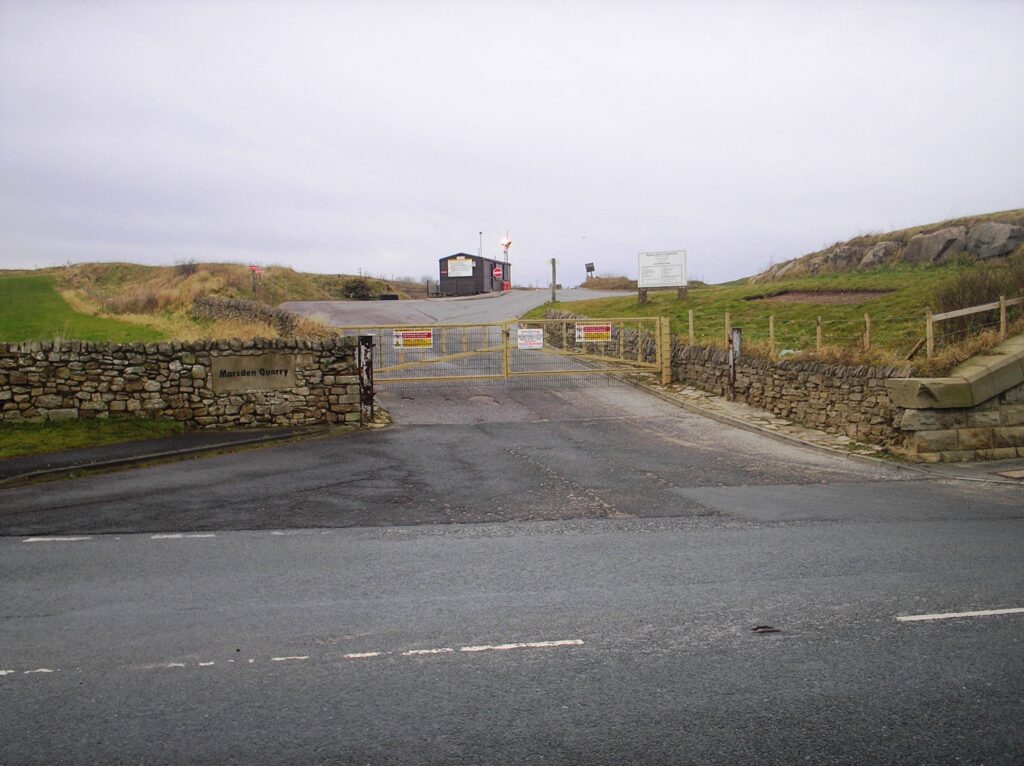
For hundreds of years quarrying had taken place in the Marsden area, many local buildings have been built with Marsden stone including Whitburn Mill and St Andrews church at Roker.
When the Whitburn Coal Company brought the land around Marsden they also brought 5 existing quarries. The Harbour quarries were already exhausted but extensive and were ideally situated for the disposal of the pit waste. The old Marsden quarry which was nearing its end of life.This quarry was never infilled and still survives today as a nature reserve.
The two remaining quarries known as the Lighthouse quarries had great potential as they were virtually unworked with large reserves of limestone. These quarries were developed and merged into one quarry known today as Marsden quarry. The coal company also built a large battery of lime kilns into the hillside next to railway line and started the mining of the limestone on a major scale. At the height of employment there was over 100 men working on the site.
Today the quarry is owned by Owen Pugh aggregates.
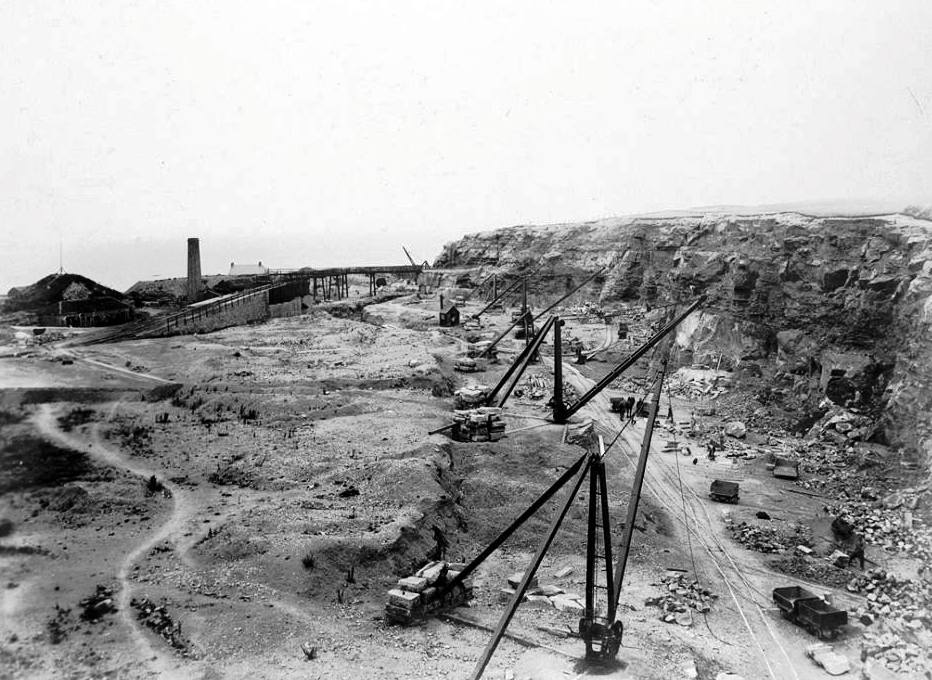
Next to the quarry entrance, the westside abutment of the lighthouse bridge which carried the railway over the new road still stands intact.
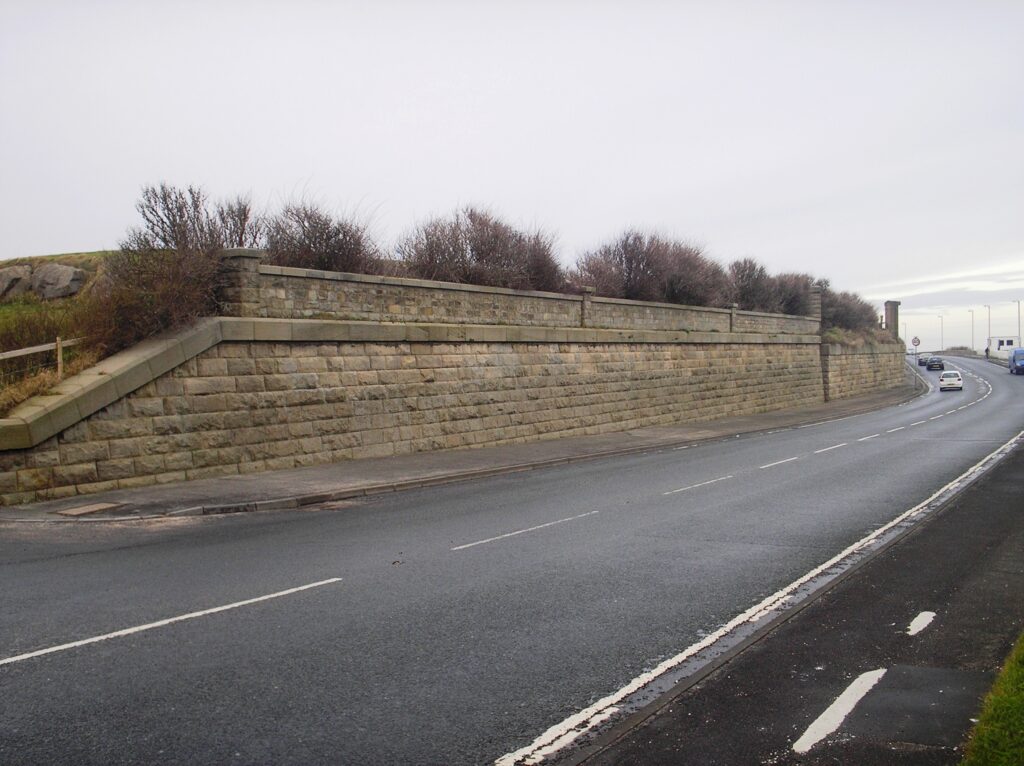
In 1923 South Shields corporation decided to build a coast road between South Shields and Whitburn the biggest obstacle to the plan was the route of the railway. The corporation paid the coal company £10,000 compensation to realign the railway to accommodate the new road. In 1924 work commenced on the new coast road. Also in this year the corporation started construction work on the lighthouse bridge to take the realigned railway over the new road. Incredibly the corporation ordered 1,500 tons of limestone from Alston Quarry in Cumbria to build the abutments which seems ludicrous when you consider the proximity of Marsden quarry.
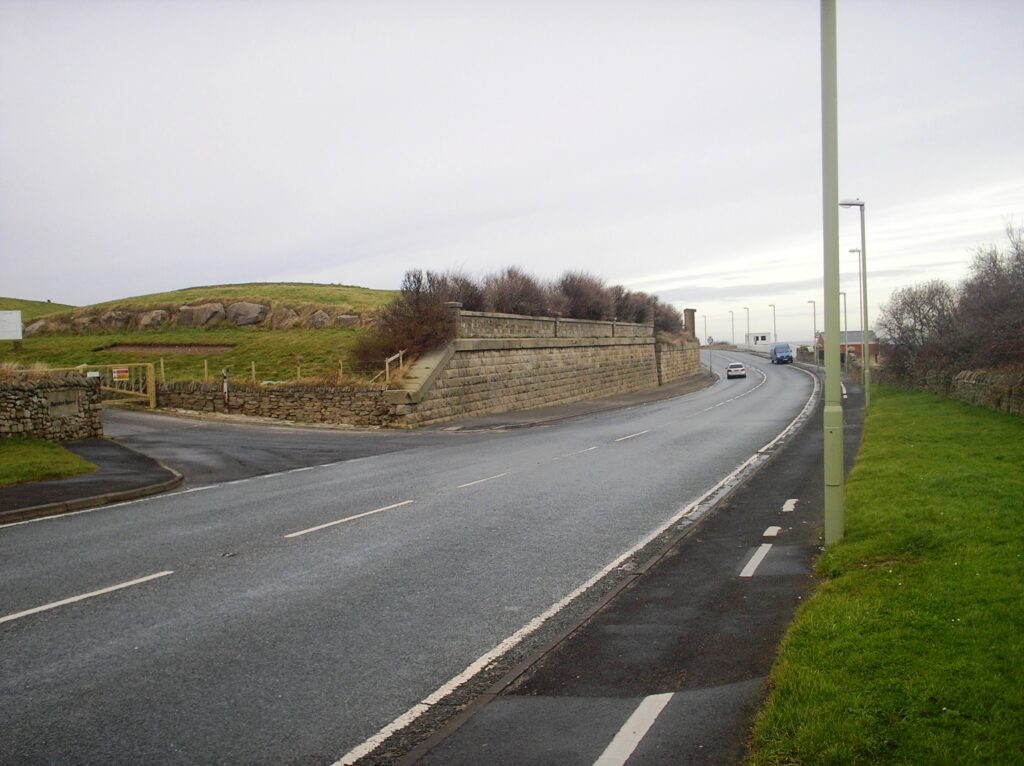
I think it’s up to the reader to make their own mind up why this nonsensical decision to bring limestone from Alston to Marsden was made. Perhaps it was one of the contributing factors why the corporation actually went bankrupt building the road.
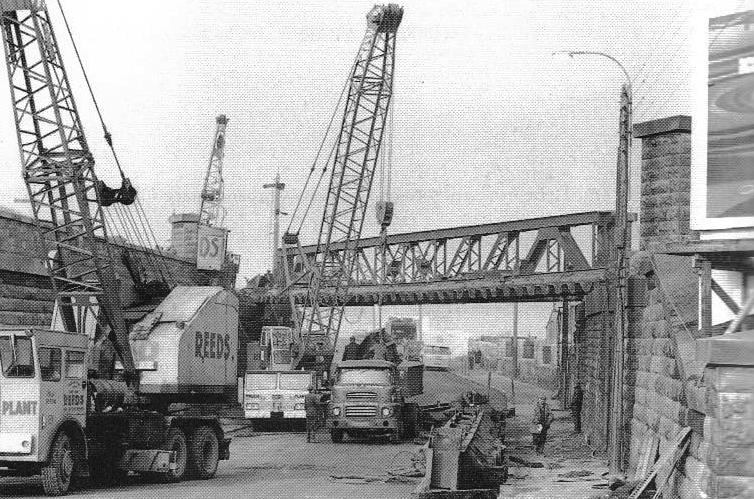
On the opposite side of the road to abutment the old Marsden school gates still stand. Built by the Coal company the school first opened in 1882 when 62 children were enrolled. Due to the ever rising population of the village the school was enlarged and re-opened on 29th June 1885. The school attendance at this time 270 with 7 teachers employed. The school officially closed in 1931 with the pupils transferring to the present school on Mill lane. The old buildings still stood until the demolition of the village.
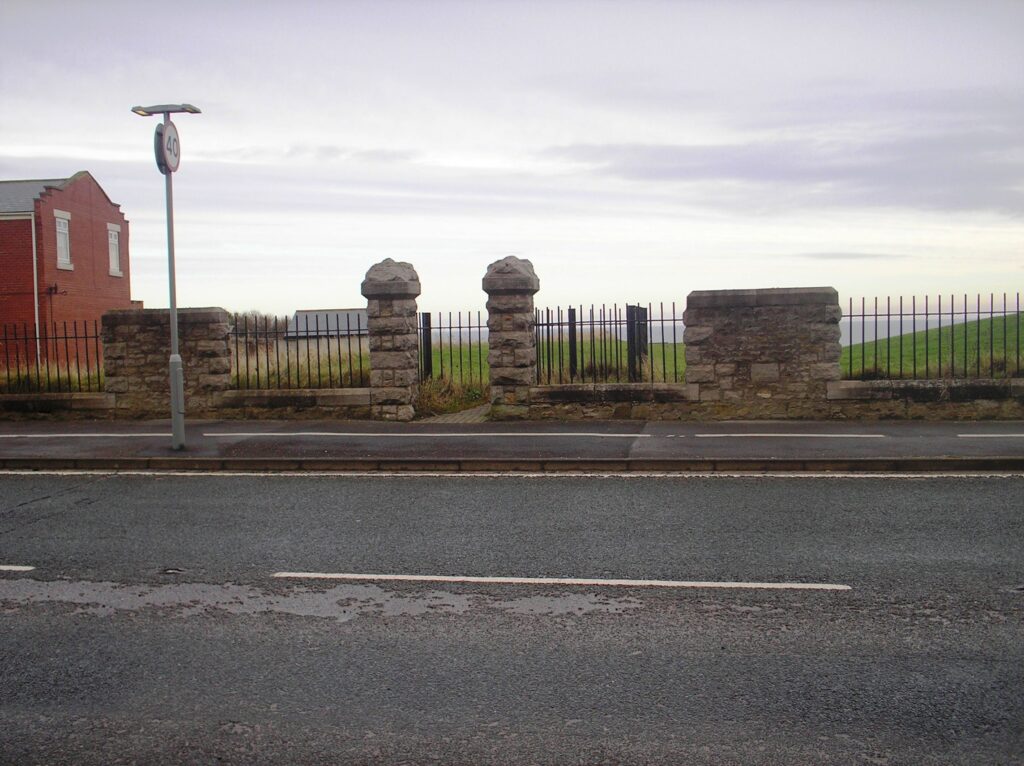
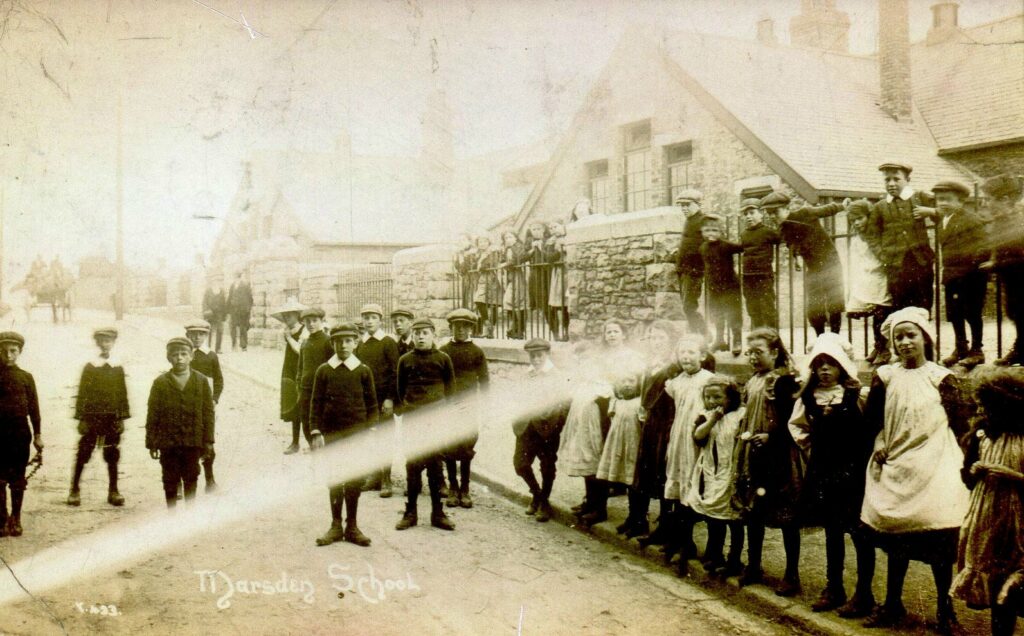
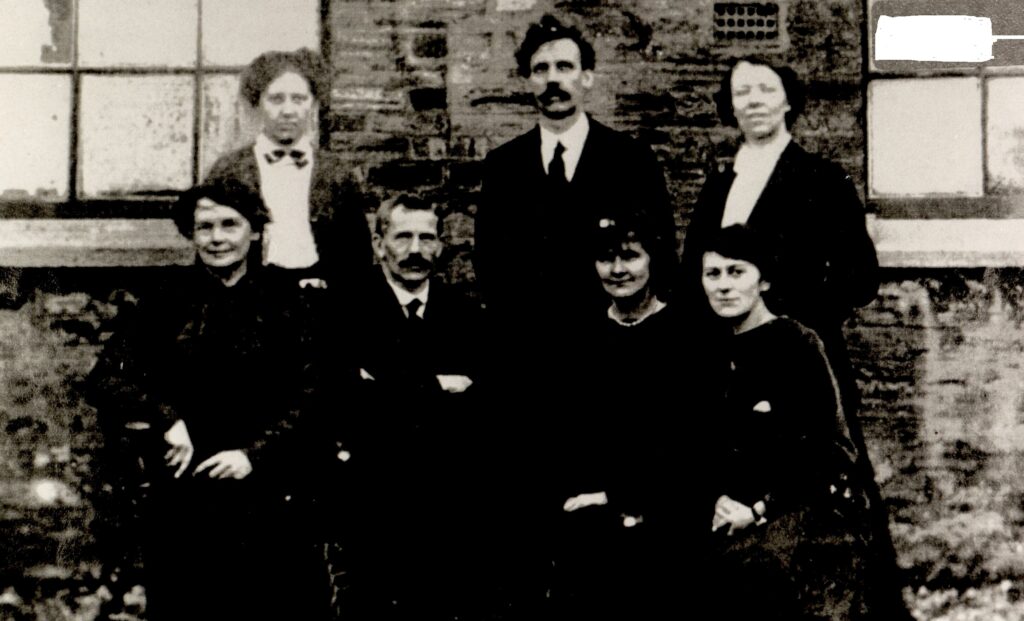
Standing: Miss Smith. Mr Mitchell, Miss Shipley.
Sitting: Mrs Ash, Mr Black (Headmaster), Miss Tones, Miss Gill.
Sitting second from right is my great aunt Annie Augusta Tones. She was born 2 April 1888 in Tow Law the 4th of 5 children. Her father John Tones was a policeman and her mother was Jane Hutchinson. Her only sister was my Grandmother Mabel who was born in 1885 and lived to be 102. The family lived at several houses in the Consett area and when their father was promoted to Sargent they moved to 18 Durham Road in Blackhill, near Shotley Bridge. The two sisters were close in age and spent a lot of time together. I heard from my Grandma that they attended Church at Snods Edge and used to walk there from Blackhill. They continued to live in Blackhill until 1911 when their mother died and the family appears to have split. The adult children moved to South Shields and shared a house at 21 Charlotte Street. Annie started to teach at St Hildas school in Waterloo Place, South Shields and later moved to the Marsden School though I do not know the date. I recall my Grandma telling us that Annie travelled to work on the Marsden Rattler. Over the next 10 years all her brothers and sisters married but Annie continued to live in Charlotte Street until the 1930’s when she bought a new house at 30 Chester Gardens, off Sunderland Road. She probably moved to Cleadon Village school at this time as it was an easy bus ride away. Annie retired as Headmistress of Cleadon Village school in 1953 when she was presented with a clock inscribed ‘ Presented to Miss A.A. Tones March 27th 1953 by staff and scholars of Cleadon Village School as a token of esteem’. I remember visiting 30 Chester Gardens as a child and was always made very welcome. Aunty Gussie as we called her never married and I never heard of any romantic involvement though it is possible she had a young man who was killed in the Great War, we will never know. She died on 6 April 1965 at the age of 77.
John Coatsworth 2014
Just up from the school gates you come to Souter Point Lighthouse. Souter became operational on the 11th January 1871. It was the first lighthouse in the world to be actually designed and built specifically to use alternating electric current, the most advanced lighthouse technology of its day. Trinity house employed a principal lighthouse keeper and 4 assistants at the site. Souter was decommissioned in 1988, at which point it was handed over to the National Trust, who opened it to the public in 1990.
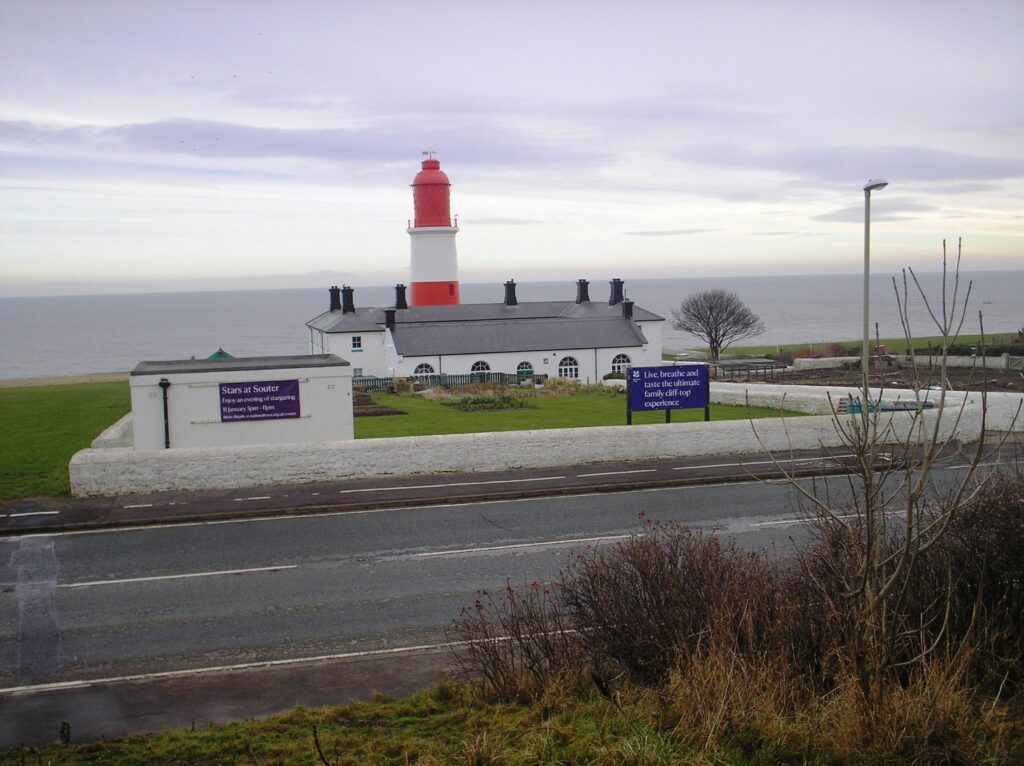
Across and up the road a little way from the lighthouse you have Hill House, what was the old village post office and general store now a private residence.
Harry Moon was the postmaster for many years. The shop provided employment for him and his 2 daughters Patricia and Noreen.
The last postmaster was James Thomas Cowans. Following his death in the late 1960’s the boards went up around the old post office.
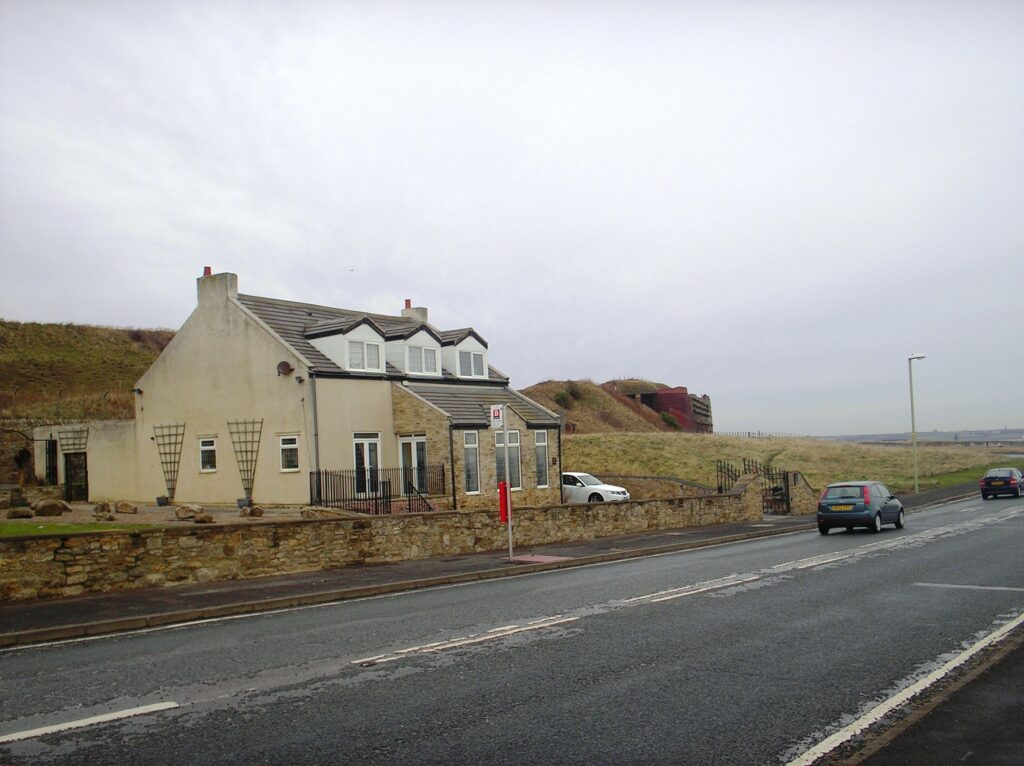
Next to the post office stood the coal depot known locally as Swinhoes.
Despite the poor quality of this aerial photograph you can see circled in red the post office and the coal drops for the coal yard.
Lorries delivered coal from the depot all around the area.
About 15 men were employed at this site.
The names of some of the lads that worked here in the 1960’s: Walter Sutcliffe, Syd Barnes, Jack Regan, Bob Turner, Lenny Fairburn, Jack McDonald, Rob Warner, Allen Price, John Phillbon and Derek Ray. Names of two of the directors Mr Harrison and Reg Percy who played cricket for Whitburn.
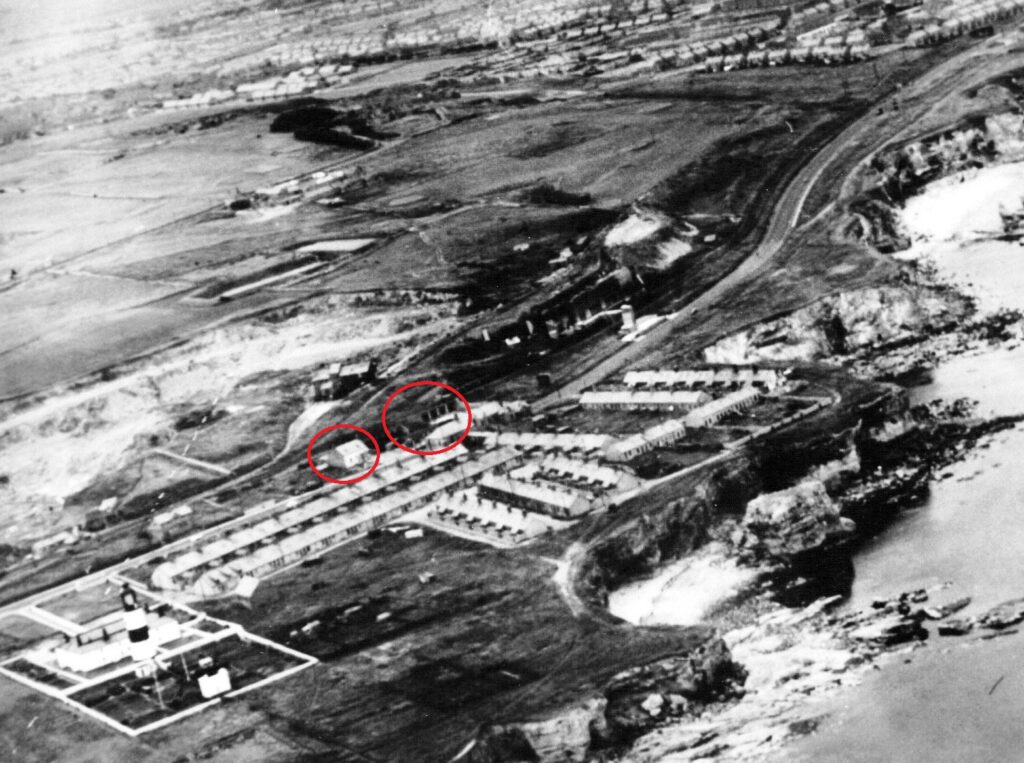
Part of the coal drops seen in the photograph still stand today between Hill House and the lime kilns.
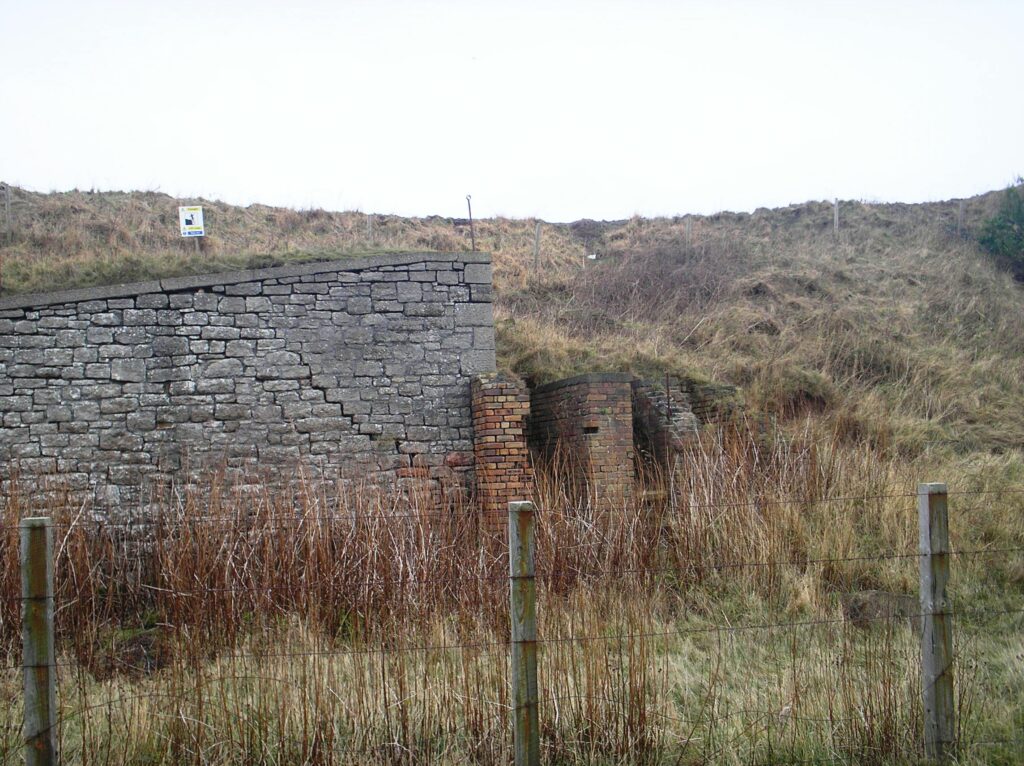
By far the co – op store was one of largest and one of most important buildings in the village and it stood directly over the road from the coal depot. The store provided the villagers with the essentials for daily living. It had a butchers shop, grocery, drapery and hardware departments (who can’t remember their mothers ‘divi’ number). With the department heads and assistants the co – op gave employment to a dozen folks.
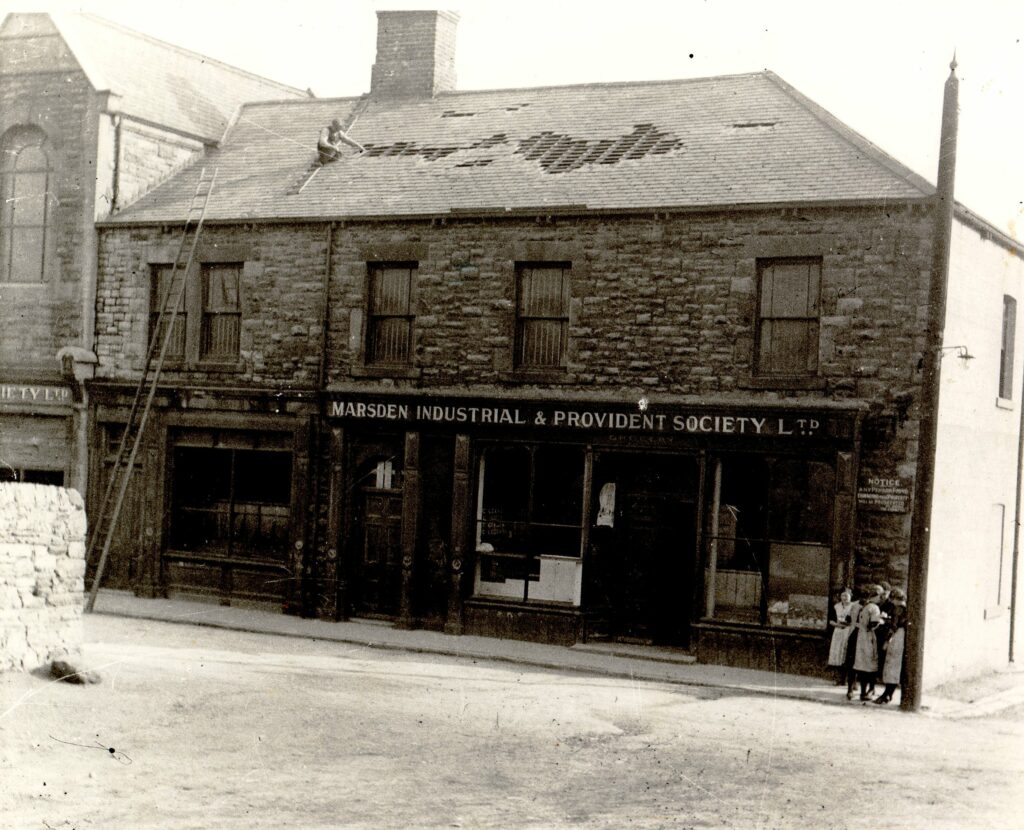
The store roof was damaged in 1926 by a shell from a 12 inch gun fired from the Kitchener battery.
The Kitchener Battery was a command post hastily built on Lizard lane during the first world war. The battery was supposed to be part of the coastal defence and although the building work began during the war it was not complete until 1921. By then the gun and turret which had come from an old warship HMS Illustrious were already obsolete.
By 1925 the war office was looking to decommission the battery and in 1926 the gun and turret were scrapped.
Although never fired in anger it was decided to fire the gun just once prior to decommissioning.
The shell was fired out to sea but caused a vacuum over the village ripping the slates for the co-op roof and doing damage to other houses in the village.
The site of the battery has now been quarried away.
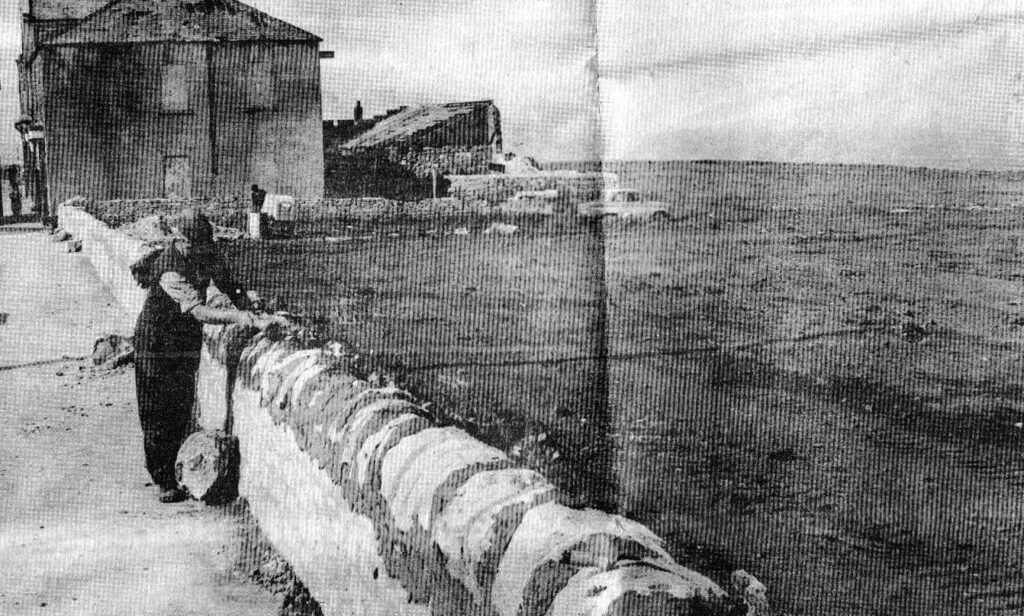
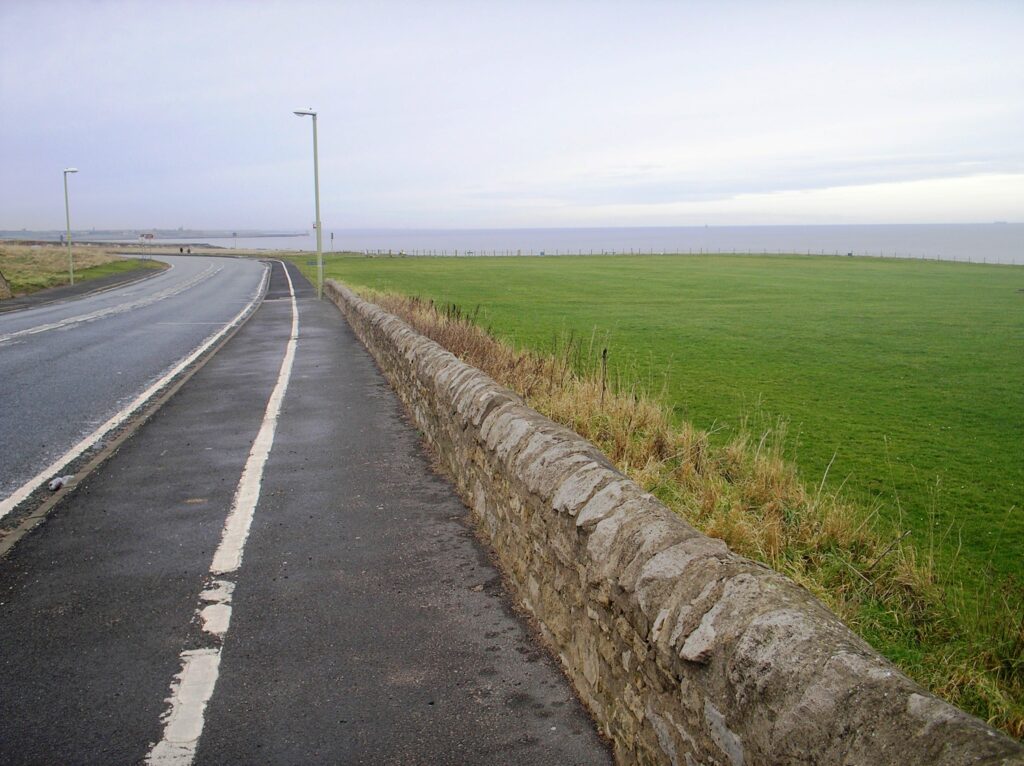
A little further north you come to the Marsden limekilns.
Today they are a Scheduled Ancient Monument.
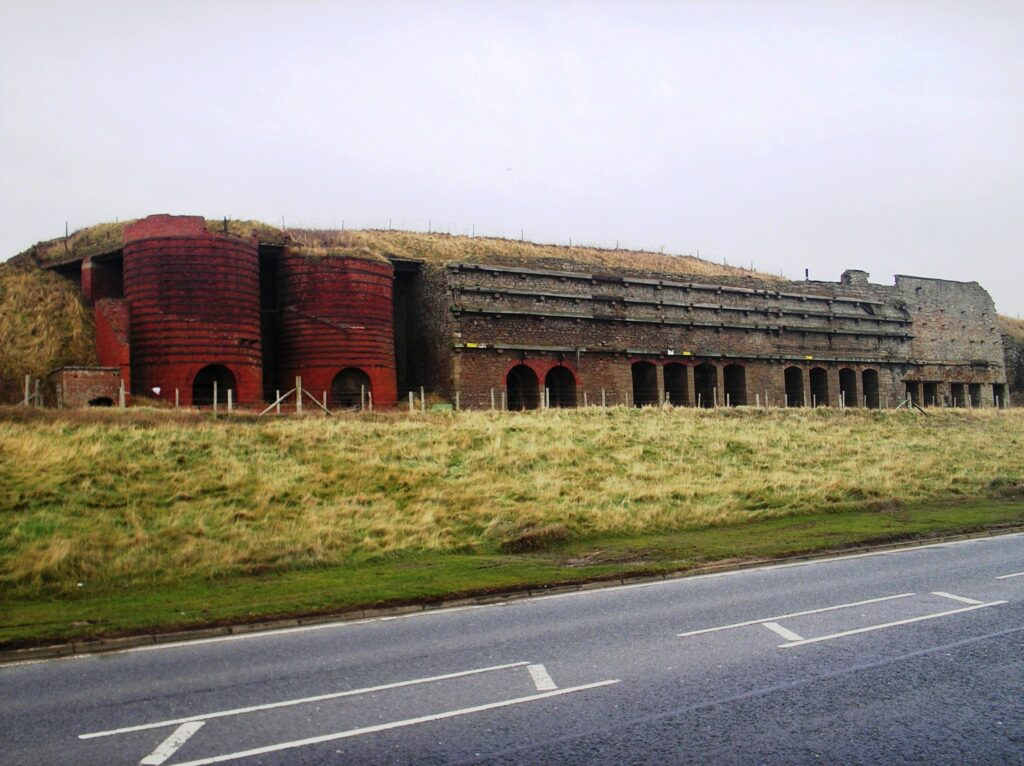
The limekilns were part of Marsden quarry. There are two types of kilns on this site. The earliest are stone battery kilns built by the Whitburn coal company about the mid 1870’s. The later brick kilns were built by the Harton coal company. The kilns used limestone from the quarry and coal from the pit. The lime produced at Marsden had many uses and was exported all over the world as far a field as Japan.
One of the biggest consumers of Marsden lime was the Consett steel works as lime is used in the production of steel. Other consumers include the chemical industries, building, road construction and agriculture. Lime is used by farmers to improve soil conditions.
At the height of production in the early 20th century the Marsden rattler, transported all the lime produce away towards the Tyne for distribution.
The limekilns were finally shut down in the late 1950’s.Today limestone is crushed rather than burnt for industrial purposes.
The limekilns workforce are included in the quarry numbers.
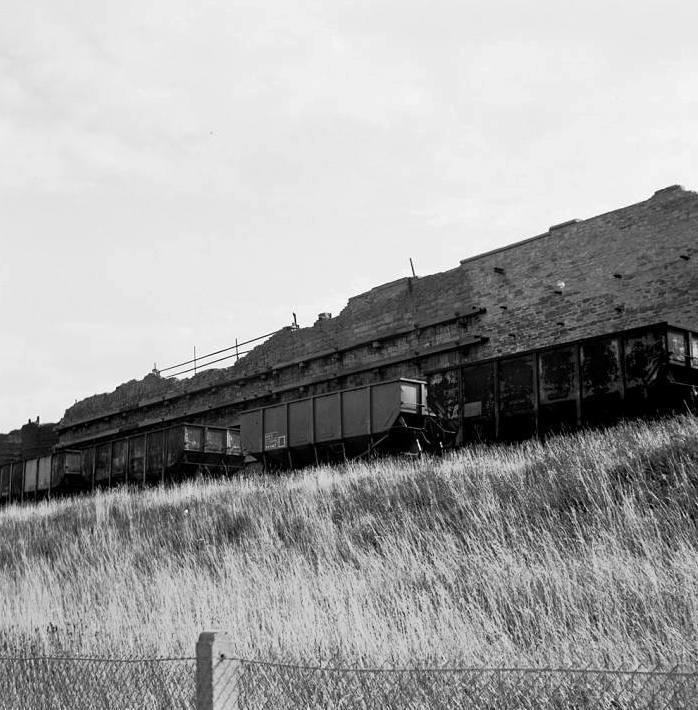
1) The Coast Road garage
2) North Eastern paper mill
3) NCB Area workshops
4) NCB No 1 area headquarters offices
5) Whitburn Colliery
6) Economic bus depot
7) The Marsden Rattler (railway)
8) Marsden quarry
9) Marsden school
10) Souter lighthouse
11) Village post office and general store
12) Swinhoes coal depot
13) Marsden Co-operative store
14) Lime kilns
All gave employment to hundreds of people.
Today in 2014
1) The Coast road garage is still a family concern run by Mr Wilson’s son Derek and his grandson Adam they also have an apprentice Owen. 3 employees
2) Shorts lawnmowers have 5 employees
3) Marsden quarry is now owned by Owen Pugh aggregates they employ about 12 workers.
4) Souter Lighthouse is now run by the National Trust and employs about 6 full time staff and additional seasonal workers.
Today approximately 30 people are employed on this stretch of coast a far cry from it’s heyday when it was a hive of activity.
Brian Cauwood 2014
References:
The South Shields, Marsden and Whitburn Colliery Railway (Oakwood Library of Railway History) William J. Hatcher
Newcastle City Council Tyne & Wear Specialist Conservation Team 2008
Shields Gazette
All copyrights acknowledged were known.
Copyright © 2013 Marsden Banner Group.
All rights reserved. Permission granted to reproduce text for educational use only (please cite source).
